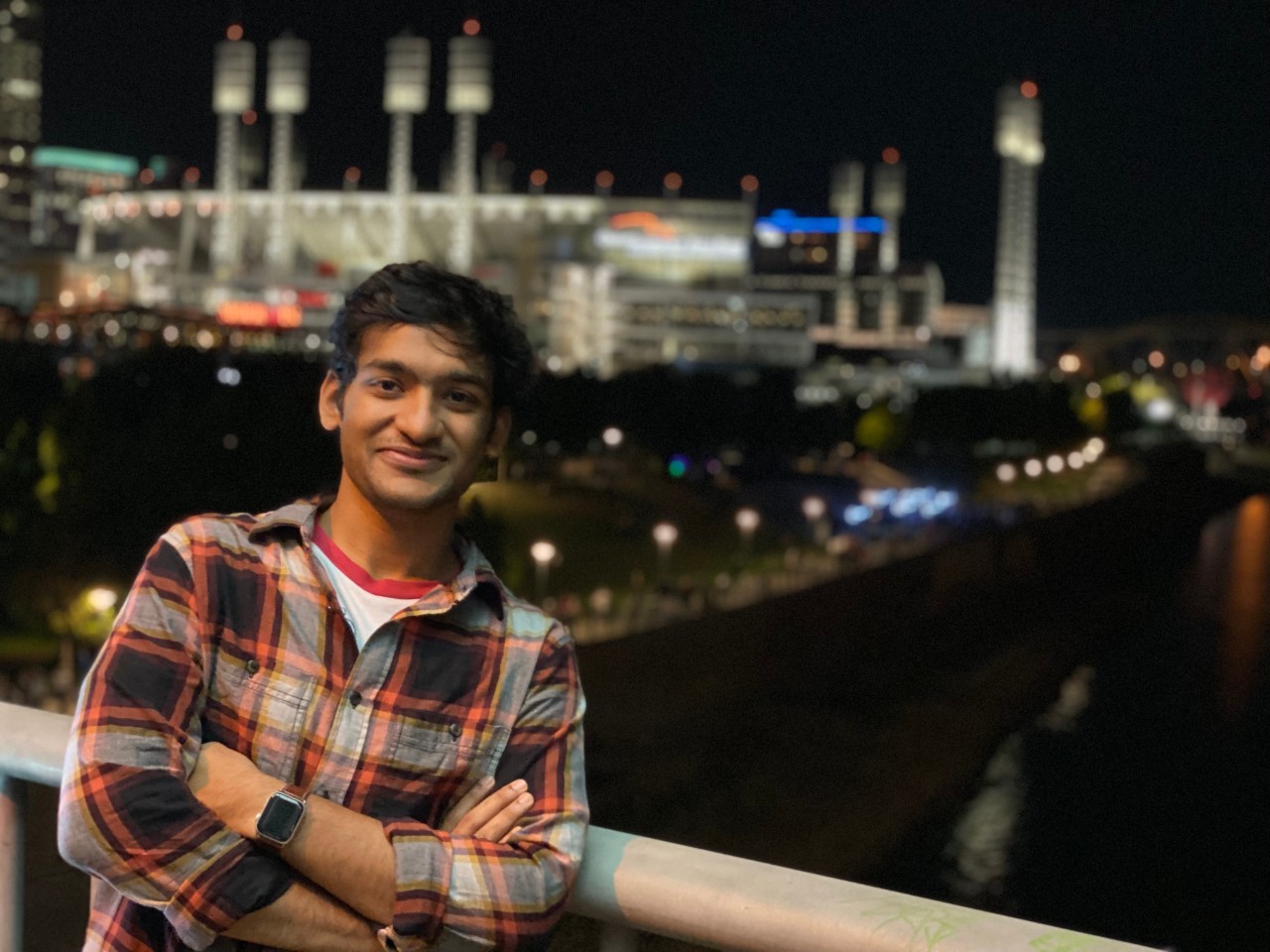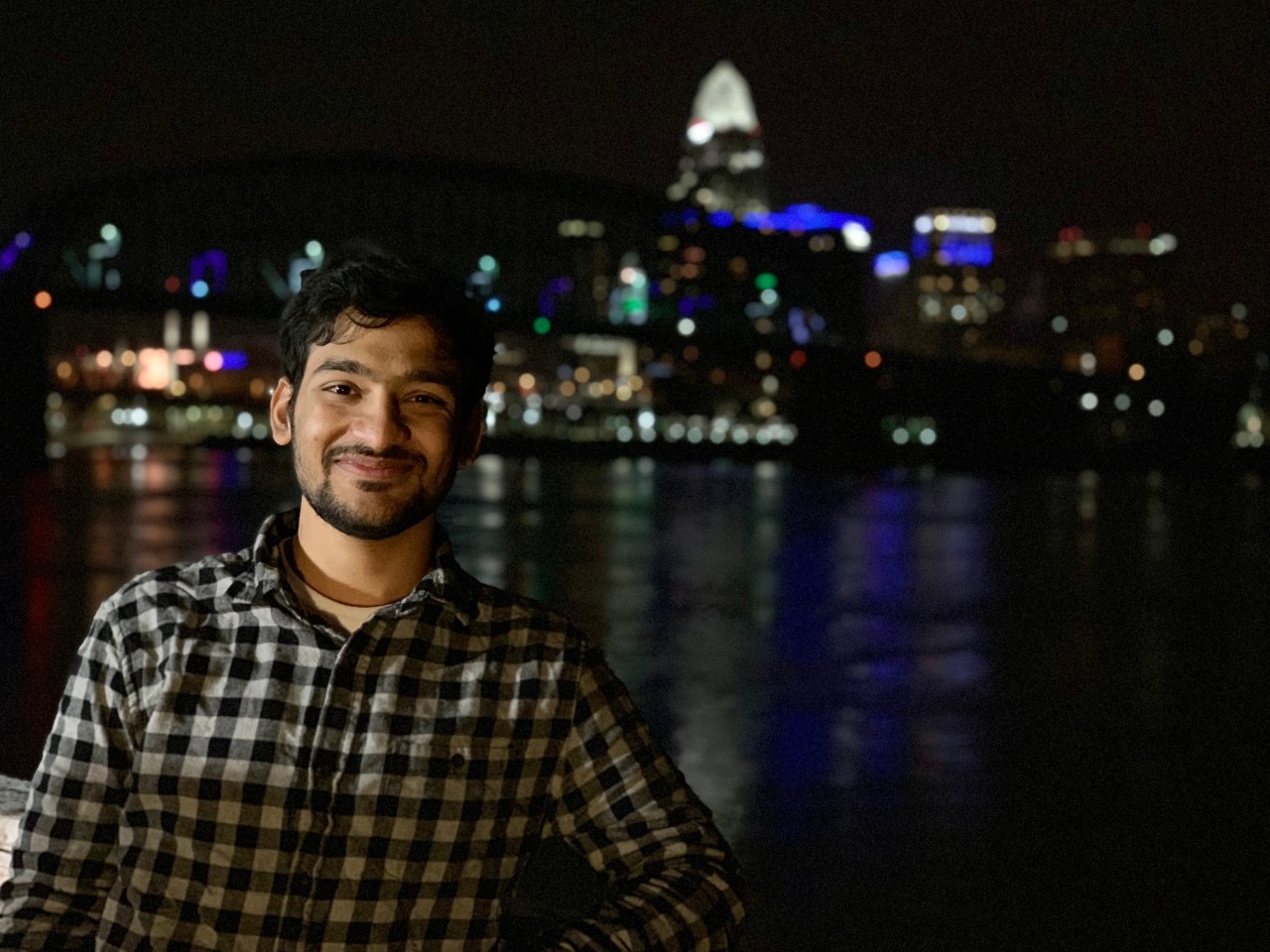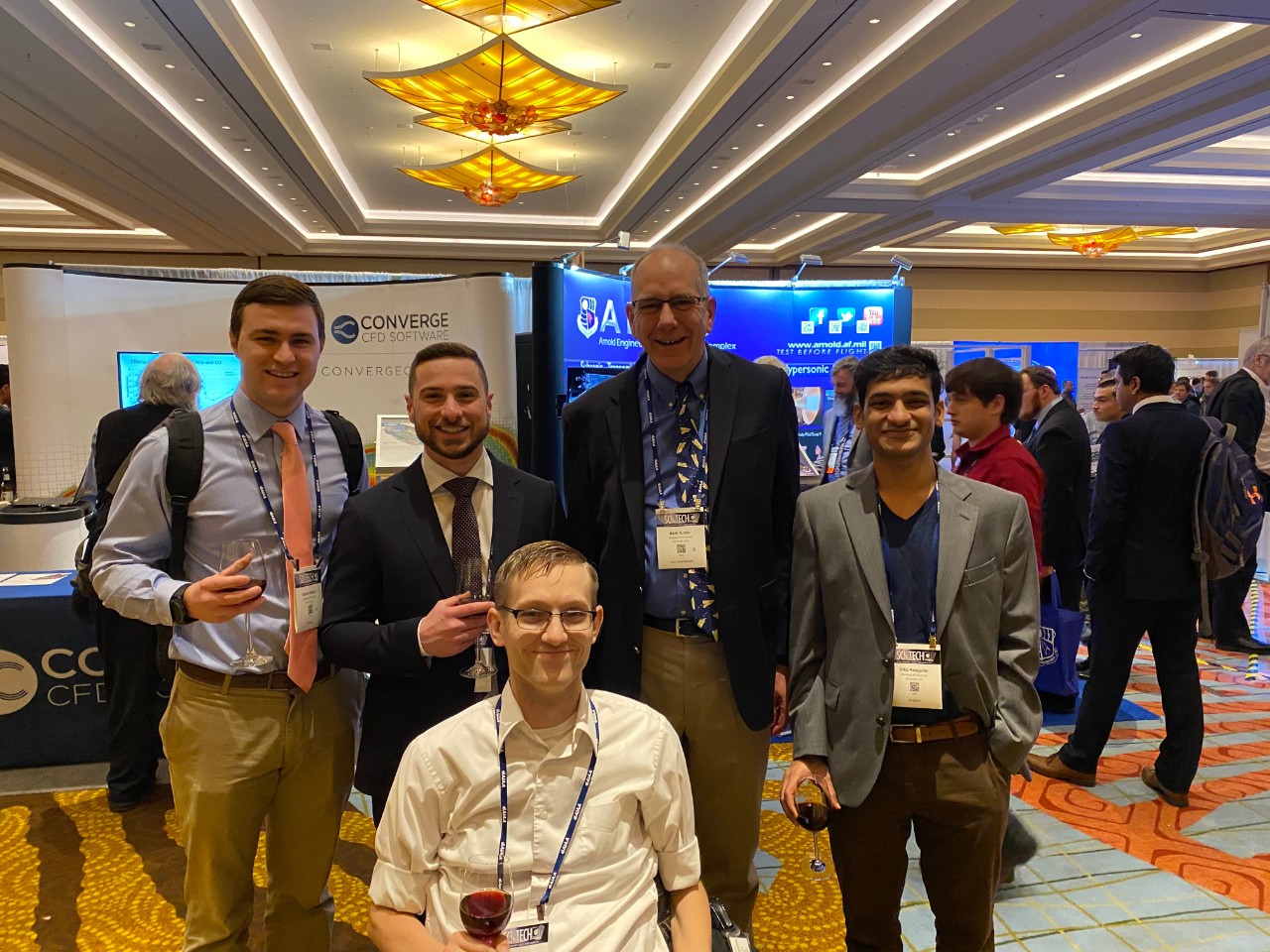
UC aerospace engineering student turns his dreams into reality
Dilip Kalagotla found a passion for teaching and research as a graduate student
Dilip Kalagotla, a doctoral candidate at the University of Cincinnati, came to the U.S. to study aerospace engineering. He is working to improve tools used in the field. Particle image velocimetry, the focus of his research, provides important data to aerospace engineers. He was named Graduate Student Engineer of the Month by UC's College of Engineering and Applied Science (CEAS).
Why did you choose UC?

Dilip Kalagotla in Cincinnati. Photo/provided.
When I was applying for my graduate program in aerospace engineering, I was looking for schools that have the best programs and have an affordable and fun lifestyle. Fortunately, UC checked all my boxes. It was also the only school I applied to that offered me scholarships from the get-go, which made my transition to the U.S. and stay here very comfortable. Plus, Cincinnati offers everything a bigger city can, but at an affordable scale. After doing my research, I chose UC to pursue my graduate degree(s), and it has not disappointed me.
Why did you choose aerospace?
Aerospace has always excited me. When I was a kid, my dad bought me an airplane toy that I would sit on and pretend I was flying. My dream of flying did not come true until I decided to pursue higher education. For my undergraduate degree, I studied mechanical engineering because at that point in my career, it was the closest I could get to aerospace. As a kid, I was always drawn to math, physics, research and flying. Putting these interests together, the path I saw before me was aerospace engineering.
What problems do you hope to solve?
My research deals with an experiment called particle image velocimetry (PIV), which is an essential part of aerospace engineering. To simply describe it, we take images of particles in a fluid or gas flow, then analyze them to get the physics of the flow field. Aerospace engineers need to understand this data to make important decisions during the research and development stages of their work. I am focused on the analysis part of this experiment, meaning most of my time is spent in front of a computer trying to make PIV a better tool for engineers.
The idea for this research came to be when my mentor, Dr. Paul Orkwis, was working on a paper for the American Institute of Aeronautics and Astronautics (AIAA), in which the team observed some inherent uncertainties in the PIV experiment. Orkwis is a mathemetician, so the things we see from a physicists perspective, he can see from a simple, mathematic perspective. These uncertainties are what we plan on estimating accurately with the tools we are developing. This has not been done before, because most of the industry has been focused on working and developing better particles and tools, but my work looks at it from a more backward approach. For instance, we start estimating uncertainties after the experiment is done so we have ample data to work with. This was possible from looking at these experiments from a mathematic lens. I am truly grateful for Dr. Orkwis and the amount of freedom I have been given to take this research in my direction.
What are some of the most impactful experiences during your time at UC?

Dilip Kalagotla and his lab-mates at the SciTech conference. Photo/provided.
I must say the people I have met during my time here have been most impactful. My life in the United States is surrounded by the people of UC. From my friends, to faculty, to professors of CEAS, all these people have changed me both professionally and personally in many ways.
What are your plans after earning your degree?
My affinity for academia is so strong that I plan to spend my life here. I love the claassroom environment, interacting with students from different backgrounds, it is truly a unique place. As I teach, I also learn a lot in return and it has been a wonderful experience that i want to continue. I also enjoy exploring new fields such as AI. Aerospace engineering is at the forefront of innovation and exploring the idea of using these fields excites me. I strongly believe that being in academia will allow me to achieve my life goals. Currently, I have been putting time into creating lectures while wrapping up my doctoral degree. Overall, my goal is to come back to academia; I just love the atmosphere here!
Do you have any hobbies?
In my free time, I like to travel a lot. I have been to more than 25 states in America, mostly on road trips. I do some volunteering activities to help local businesses as well, and during winter, I hand out food and supplies to homeless people around the city of Cincinnati. I founded the UC Piloting Club in 2019, which caters to piloting as a hobby or just for curious students of UC.
Featured image at top: Dilip Kalagotla. Photo/provided
Interested in engineering graduate programs?
Discover the advantages of a graduate degree from the College of Engineering and Applied Science.
Related Stories
UC student aims to better interpret artificial intelligence
May 24, 2021
Javier Viaña Pérez started his studies in mechanical engineering earning two degrees in his native Spain and then came to the University of Cincinnati for his master’s and Ph.D. in aerospace engineering. He has racked up a long list of accomplishments, including creating a high-resolution camera for microsatellites that is currently in use on the International Space Station. His doctoral research in artificial intelligence is dedicated to making a radical shift in how we think about AI. He was named UC College of Engineering and Applied Science Graduate Student Engineer of the Month.
Engineering student makes sense of waves
July 9, 2021
When Parikshit Boregowda, mechanical engineering doctoral student at the University of Cincinnati, is staring at ocean waves crashing into the shore, he’s thinking about the problems he can solve through better modelling methods to study the motion of fluid.
WCPO: UC's 3D printers help young engineers change the world
January 14, 2021
WCPO talks to UC College of Engineering and Applied Science professor Sam Antoline and UC student Arshad Mohammed about the growing use of 3D printing for research and manufacturing.
